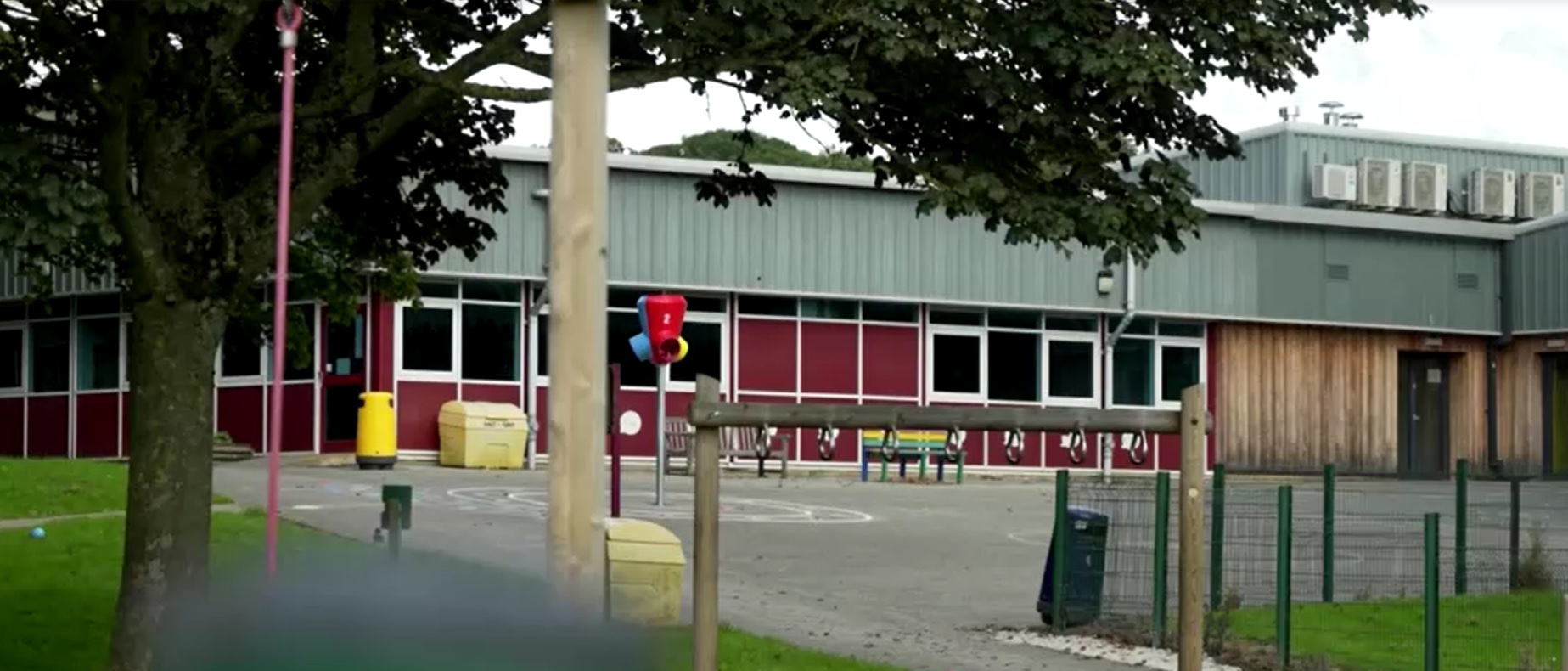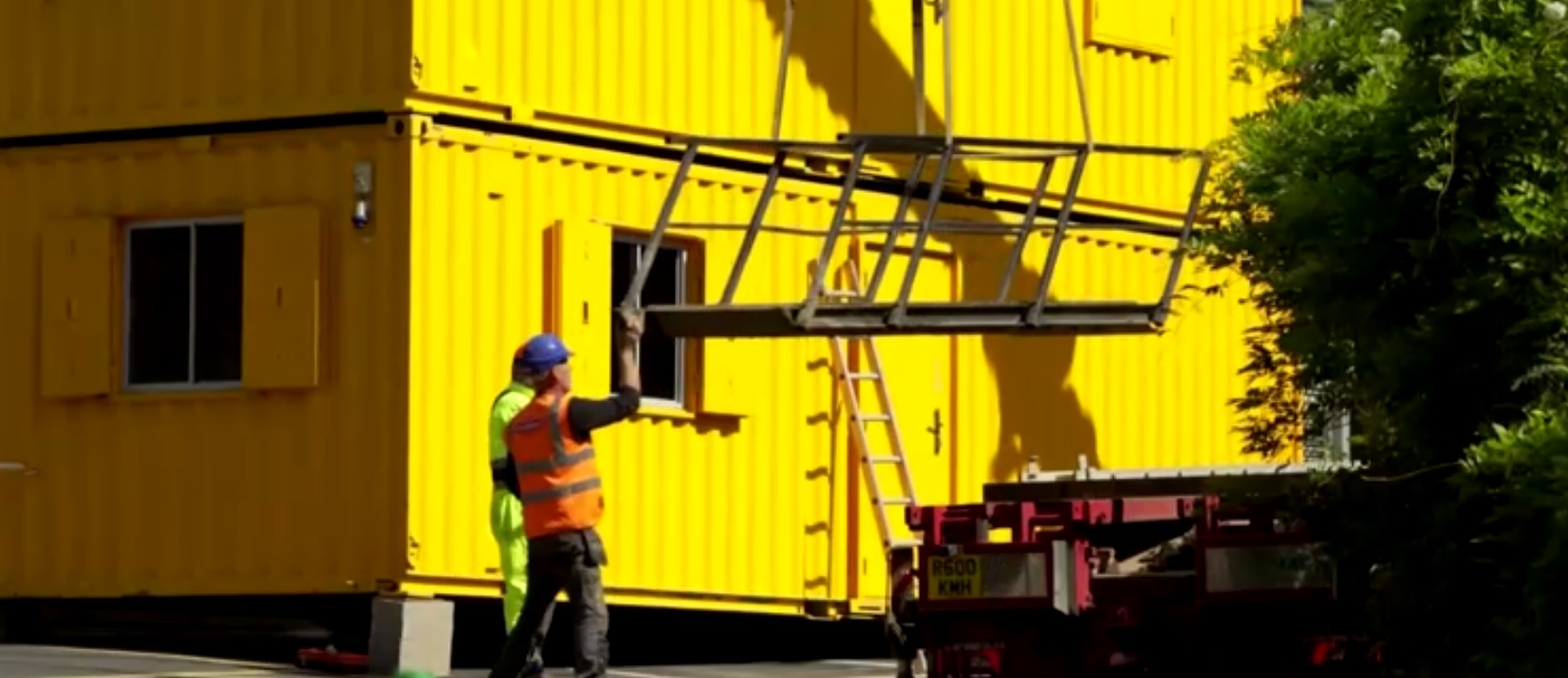
Eldwick Primary School in Bradford is one of more than 100 schools across England that have been ordered to partly or fully close after surveys revealed it was built using a dangerous form of concrete. /Reuters
Eldwick Primary School in Bradford is one of more than 100 schools across England that have been ordered to partly or fully close after surveys revealed it was built using a dangerous form of concrete. /Reuters
Just days before the start of the new school year, more than 100 schools across England have been ordered to close immediately because of safety fears over the type of concrete that was used to build them.
Reinforced autoclaved aerated concrete (RAAC) is a lightweight concrete that was used extensively in roof, wall and floor construction in England from the post-war period right up until the mid-1990s because it was cheaper and easier to produce.
But it's now passed its 30-year design life and experts have warned that buildings containing RAAC are at risk of collapsing at any time. So far, 156 schools have been found to contain the concrete - a number that could rise once inspections have been carried out on all schools - with 104 being ordered to be vacated and restricted until mitigations have been put in place.
The UK government has been criticized for failing to take urgent action sooner, but Prime Minister Rishi Sunak says it's "utterly wrong" to blame him for failing to fix crumbling schools.
What is RAAC and why is it dangerous?
RAAC is a cheaper and lighter form of concrete, which means it's more vulnerable and dangerous than standard concrete. RAAC has an aerated structure - this means that moisture can seep in and weaken the material, making it susceptible to collapse. This vulnerability also means that steel reinforcements that run through the concrete aren't well protected from rusting.
The dangers of RAAC were exposed in 2018 when a primary school in Kent was temporarily closed after a roof fell in. It happened above the school staff room, also damaging toilets, ICT equipment and an administration area. The collapse prompted Kent Council to write to other local authorities warning them to check for RAAC in their schools.
As of August 30, records show that there were 156 educational buildings built with RAAC. Only 56 of these had "mitigations" in place, meaning engineers had deemed sites were not a risk due to areas being closed down or reinforced with other materials.

Remedial work on schools that have been affected by RAAC could take weeks or even months, forcing schools to revert to online teaching or portable teaching facilities. /Reuters.
Remedial work on schools that have been affected by RAAC could take weeks or even months, forcing schools to revert to online teaching or portable teaching facilities. /Reuters.
What did the UK government know about Raac?
Governments have been aware of the limitations and potential dangers of RAAC since the 1990s. But it claims that expert advice has changed and that the concrete wasn't previously deemed to be a danger, even if it had passed its expiry date, until recently.
In 2019, one year after the Kent collapse, the government moved to warn schools about the potential risks of RAAC and the consequences of remedial work. The Department for Education says it published guidance for schools about the need to have adequate contingencies in place in case RAAC-affected buildings need to be vacated at short notice.
Now, the government is taking further action following a spate of incidents at schools where RAAC has been used during construction, though it's declined to name the affected schools. It's believed that an incident last week, in which a beam collapsed at an educational building, has sparked the government's response.

In 2021, when UK Prime Minister RIshi Sunak was Chancellor, the government halved the budget for school repairs in England. But Sunak says it's 'utterly wrong' to blame him for the fiasco./Reuters/Justin Tallis.
In 2021, when UK Prime Minister RIshi Sunak was Chancellor, the government halved the budget for school repairs in England. But Sunak says it's 'utterly wrong' to blame him for the fiasco./Reuters/Justin Tallis.
How will schools be affected?
Schools that are found to have been built using Raac potentially face months of chaos. So far, The Department for Education (DfE) has newly identified 104 schools and sixth forms with problems. These schools have been told to partly or fully close and, where possible, immediately pivot to online learning.
Reconstruction work could take months and schools have been advised to begin putting in place contingency plans, for example procuring portable classrooms and toilet facilities, to minimize disruption in the event that surveys find that their buildings are vulnerable.
Education Secretary Gillian Keegan has moved to reassure schools that reconstruction work to remove RAAC will be funded by the government. But critics say that in 2021, when Sunak was Finance Minister, the government halved its budget for school repairs in England, slowing the process of resolving the problem and putting schools, teachers and pupils at risk.